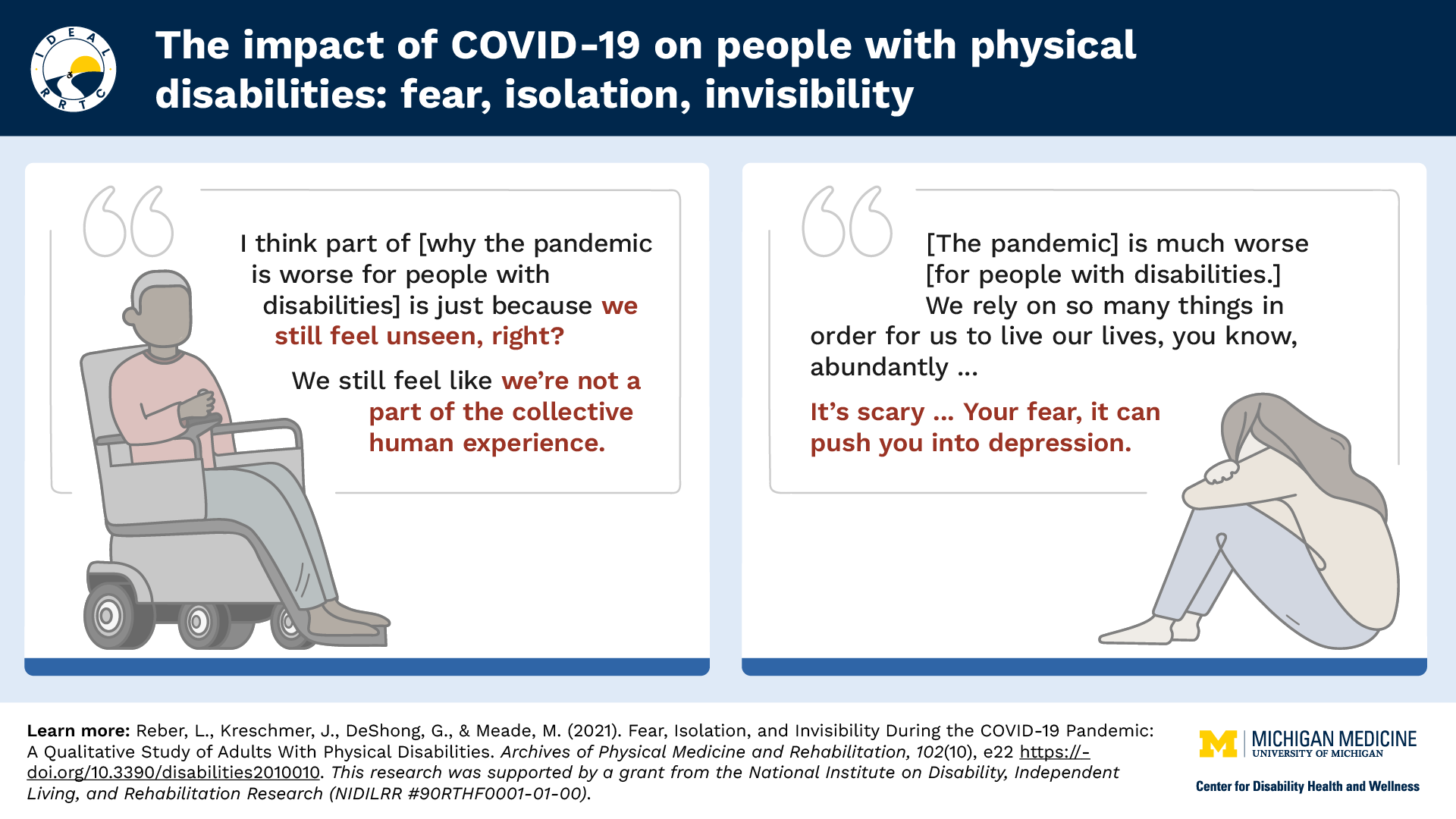"We Still Feel Unseen” The Early Days of the Pandemic for Adults with Physical Disabilities in Southeastern Michigan
Results from an IDEAL RRTC study of marginalized communities show fear, Isolation, and feelings of invisibility.
New research from the IDEAL RRTC at the Center for Disability Health and Wellness examines the impact of the COVID-19 pandemic on a marginalized group of individuals with disabilities. Interviews showed that individuals who were living “active, engaged” lives before the pandemic, were progressively isolated, made to feel invisible, and left fearful for the future. The qualitative study, conducted in Wayne County in southeast Michigan, collected data during April and May of 2020.

The authors noted that the results showed the disproportionate impact of the pandemic on vulnerable populations in lower-income and racially marginalized communities , particularly those with moderate to severe physical disabilities. The authors went as far as to state that “fear, for most participants, was an overarching facet of their lives.” Racial inequalities, compounded by the pandemic, created an unequal distribution of risk, severely impacting the quality and type of experts to which groups had access, as one example from the paper noted. Further, the paper found that fear and isolation were most often associated with barriers to health and health care, homecare assistance, and access to resources.
The authors stated that they developed this research to “make the invisible visible”—to help inform policy makers of the pitfalls of excluding certain populations from the decision-making process.
For more information: Fear, isolation, and invisibility during the COVID-19 pandemic: A qualitative study of adults with physical disabilities in marginalized communities in southeastern Michigan in the United States. https://doi.org/10.3390/disabilities2010010
This research was developed in part under a grant from the National Institute on Disability, Independent Living, and Rehabilitation Research (NIDILRR #90RTHF0001-01-00).
